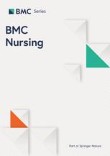Challenges, coping responses and supportive interventions for international and migrant students in academic nursing programs in major host countries: a scoping review with a gender lens
Background
International and migrant students face specific challenges which may impact their mental health, well-being and academic outcomes, and these may be gendered experiences. The purpose of this scoping review was to map the literature on the challenges, coping responses and supportive interventions for international and migrant students in academic nursing programs in major host countries, with a gender lens.
Methods
We searched 10 databases to identify literature reporting on the challenges, coping responses and/or supportive interventions for international and migrant nursing students in college or university programs in Canada, the United-States, Australia, New Zealand or a European country. We included peer-reviewed research (any design), discussion papers and literature reviews. English, French and Spanish publications were considered and no time restrictions were applied. Drawing from existing frameworks, we critically assessed each paper and extracted information with a gender lens.
Results
One hundred fourteen publications were included. Overall the literature mostly focused on international students, and among migrants, migration history/status and length of time in country were not considered with regards to challenges, coping or interventions. Females and males, respectively, were included in 69 and 59% of studies with student participants, while those students who identify as other genders/sexual orientations were not named or identified in any of the research. Several papers suggest that foreign-born nursing students face challenges associated with different cultural roles, norms and expectations for men and women. Other challenges included perceived discrimination due to wearing a hijab and being a ‘foreign-born male nurse’, and in general nursing being viewed as a feminine, low-status profession. Only two strategies, accessing support from family and other student mothers, used by women to cope with challenges, were identified. Supportive interventions considering gender were limited; these included matching students with support services’ personnel by sex, involving male family members in admission and orientation processes, and using patient simulation as a method to prepare students for care-provision of patients of the opposite-sex.
Conclusion
Future work in nursing higher education, especially regarding supportive interventions, needs to address the intersections of gender, gender identity/sexual orientation and foreign-born status, and also consider the complexity of migrant students’ contexts.

